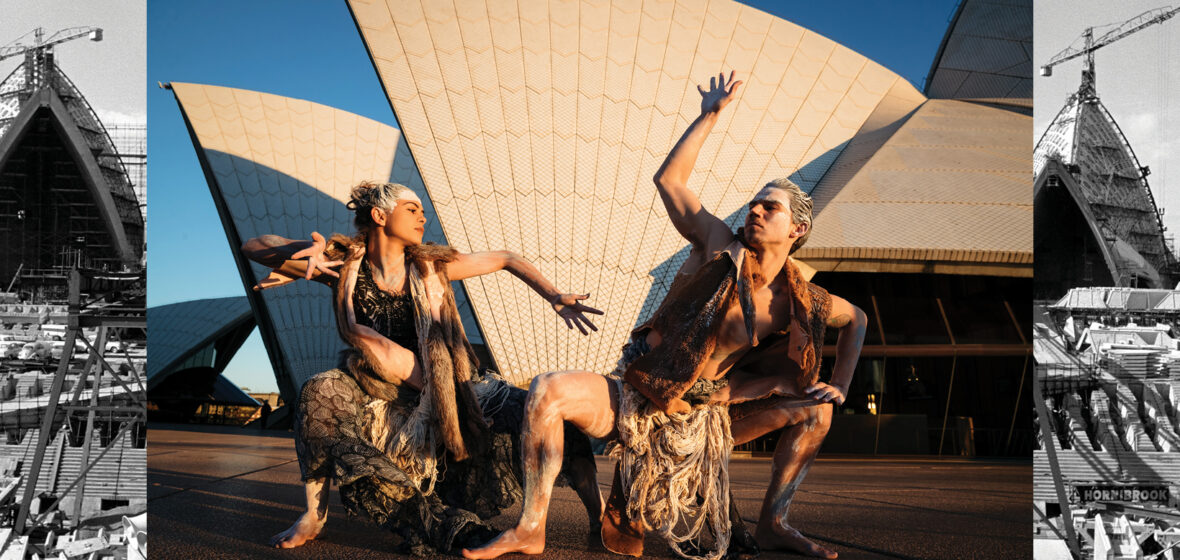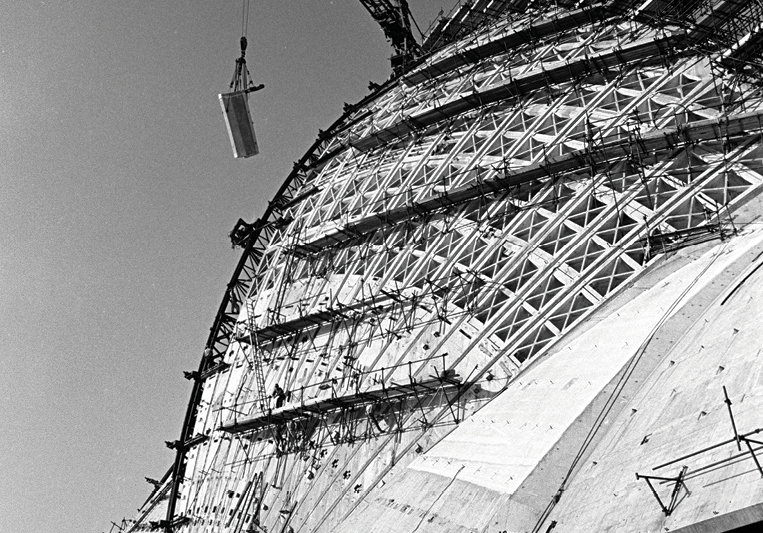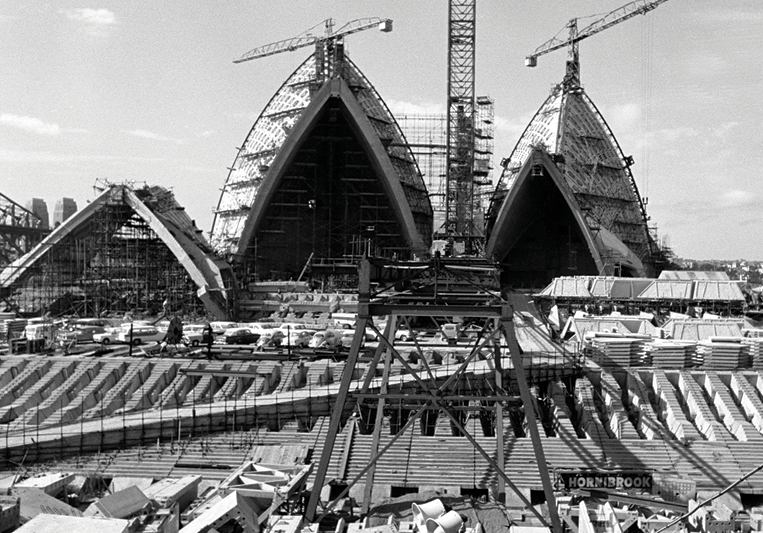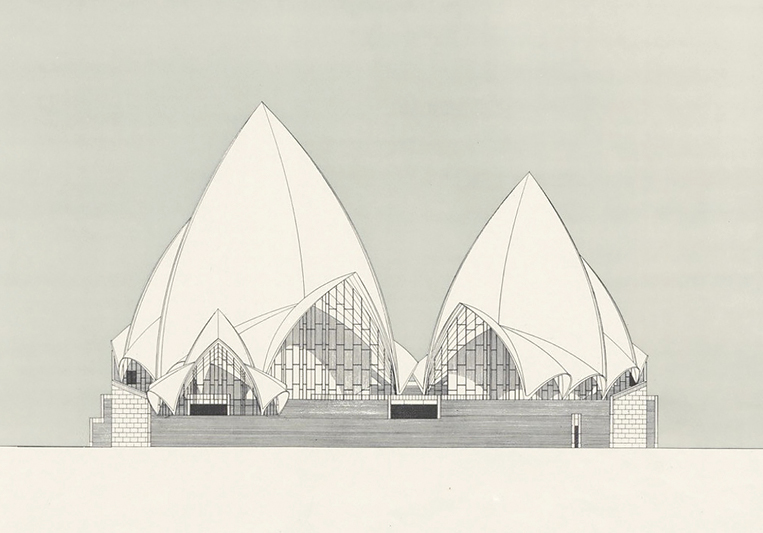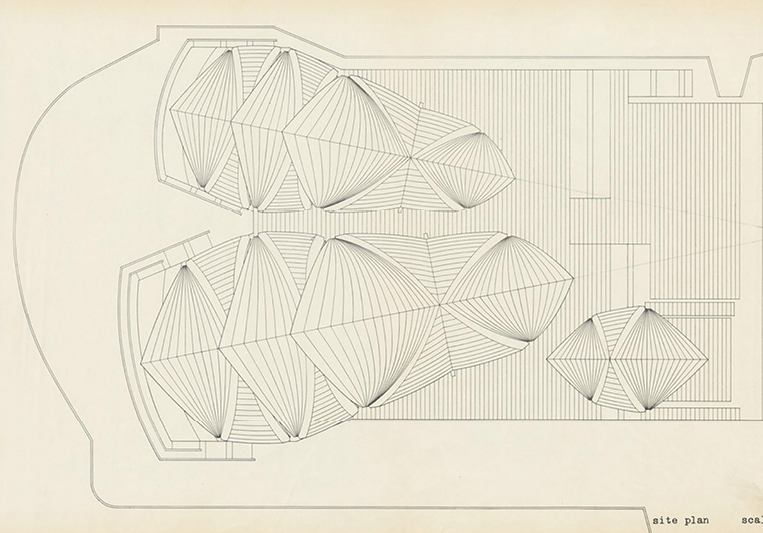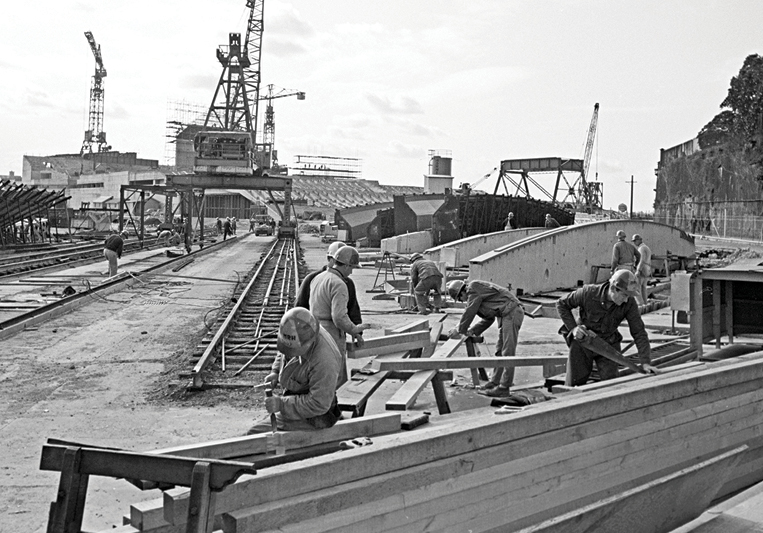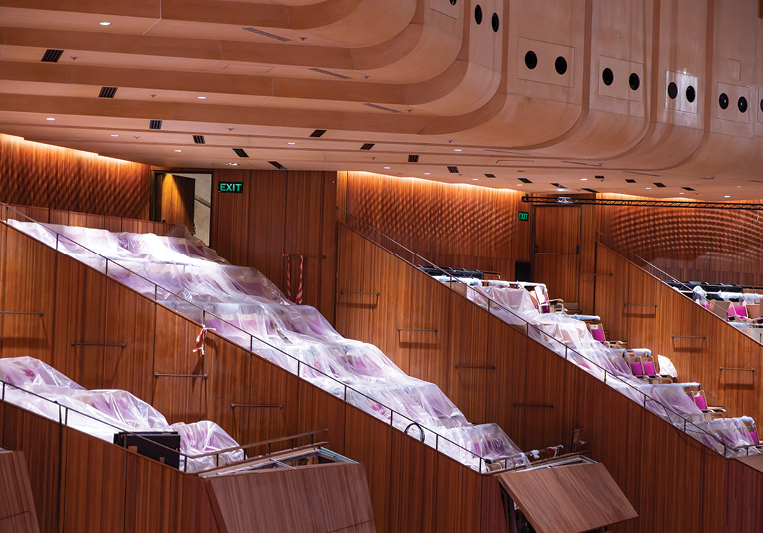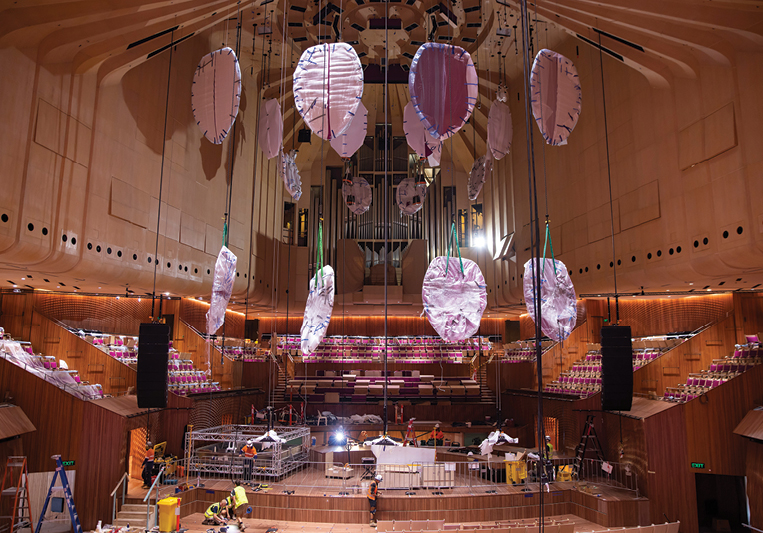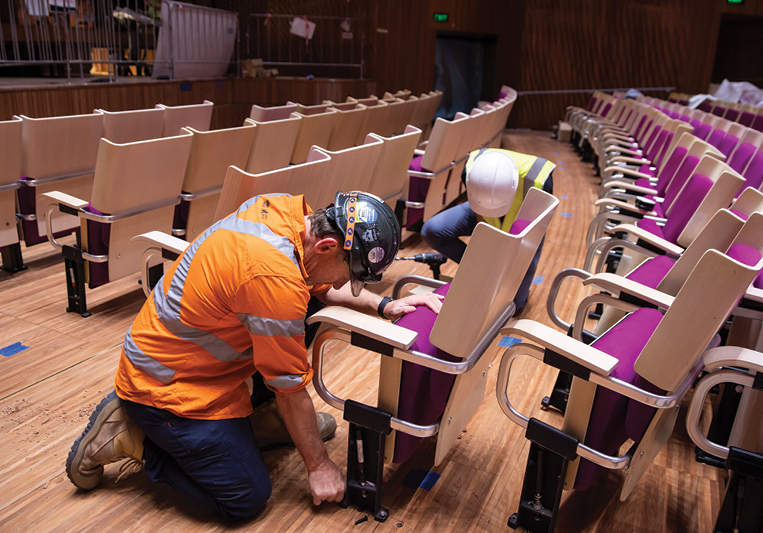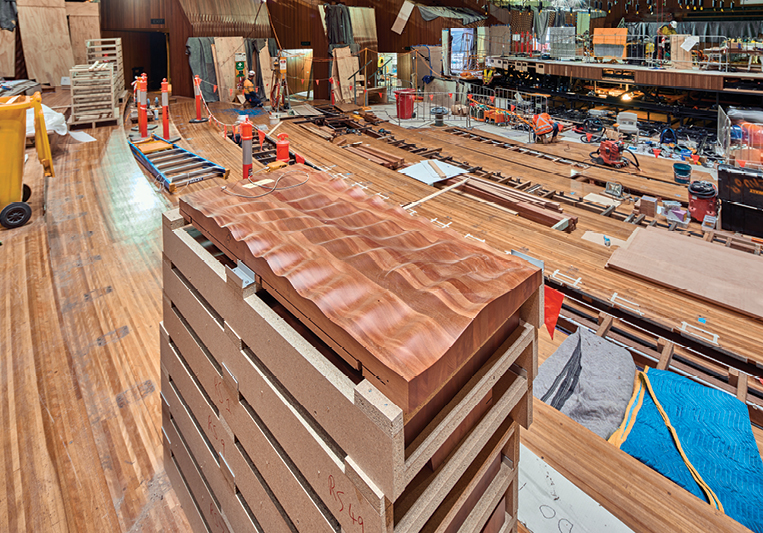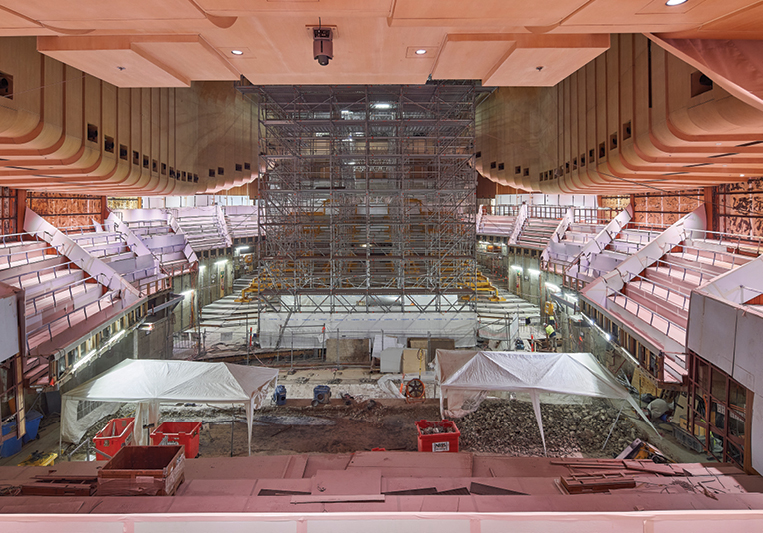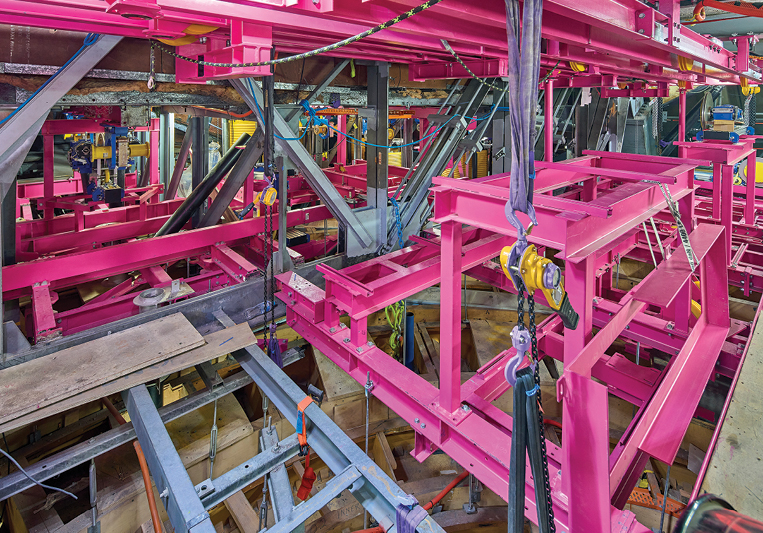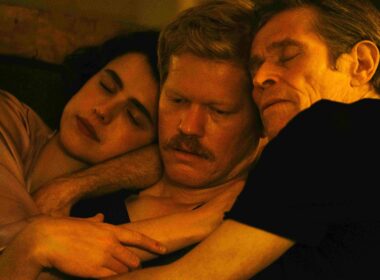The Sydney Opera House celebrates 50 years by unveiling its multi-million dollar renewal project that sets an ambitious goal: respecting its past and securing its future.
More than a million tiles – 1,056,006 of them – adorn the sails of the Sydney Opera House. From afar, they give the impression of a single unit that glisteningly complements the waters of the surrounding bay. But, closer up, their arrangement looks like an intrinsic work of craftsmanship. When was the last time you had a long look?
The “canvas” of the sails is gorgeous, like an intricate piece of shiny macramé that covers the whole building. The American architect Louis Khan once said, “the Sun didn’t know how beautiful its light was until it was reflected off this building”.
Ask any foreigner what comes to mind when they think of Australia, and their first comment will be along the lines that every animal and plant in the country is lethal. And next they’ll mention the Sydney Opera House. Not the Harbour Bridge. That’s mostly known in the anglosphere, and Uluru is more likely to come to mind only when prospective visitors are viewing tourism ads. But the Opera House? It’s a silhouette recognised by everyone, and represents more than just the city it adorns. For most, the Sydney Opera House is something that’s on the bucket list, one of the top places in the world to visit.
Construction of the Opera House initially was expected to take four years. It ended up taking 14. Work commenced in 1959 and involved over 10,000 construction workers. Images above: istockphoto, “The Red Book” and ‘The Yellow Book”, State Records NSW
It’s easy to think of the Sydney Opera House as the subject for a beautiful postcard. Until you enter its main foyer. Then your expectations will come crashing to a halt: you’ll be taken aback by the unexpected brutalist entrance that contrasts sharply with the bright and serene outdoors. But brutalism remains a highly misunderstood style of architecture by those who have little tolerance for efficient geometrical builds. As does the use of this style at this location in the Opera House. If anything, the brutalist foyer rushes you up to the main performance areas, reminding you why you’re here. There are only two possible places to be when you’re at the Sydney Opera House: outside, gaping at its wonder, or inside, in one of the theatres, enjoying a show. There’s no need for an in-between space, no need to be lured to hang out in the foyer. The message is straightforward: if you’re in, you’re watching something on a stage; otherwise, go out and enjoy the sun and the building’s beautiful exterior.
The story of the Opera House’s build is now the stuff of legends. I’ve been in this country for only six years, but have heard countless times the story of how this unlikely building came to be, and about how it was the pipe dream of Eugene Goossens, British conductor and, at the time, director of the NSW State Conservatorium of Music, who believed Sydney needed a dedicated venue for large productions on the same level as a Royal Albert Hall or a La Scala. An international competition to choose the architect received 233 applications. The winner, literally fished out from a scrap pile of rejected designs, was a relatively inexperienced Danish architect called Jørn Utzon, with a refreshing new design, for a building unlike any other.
The American architect Louis Khan once said, “the Sun didn’t know how beautiful its light was until it was reflected off this building”
With many slashes to the budget during construction, many corners were cut in the building, leading to Utzon’s premature departure before the project was completed. He criticised the final project for departing too much from his original intentions – particularly in relation to the building’s interior. Still, the Sydney Opera House opened to the public with great fanfare on 20 October 1973, and almost instantly became one of the most recognisable buildings in the world.
But just as soon as the Opera House opened, Utzon’s concerns were vindicated. The acoustics were not up to the standard the industry demanded. While the building maintained its iconic status, the acoustics proved to be a minor liability. Edo de Waart, the famed conductor who helmed the Sydney Symphonic Orchestra from 1993 to 2003, complained loudly, threatening to boycott the venue unless something was done. A 2011 Limelight article reported on a survey of musicians, critics and audiences, who rated the Opera House 18th out of 20 similar venues in terms of acoustic quality.
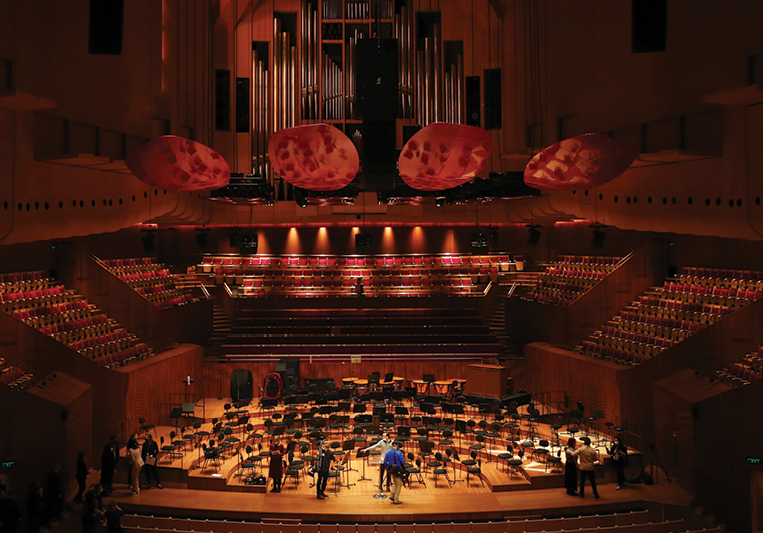
An expected change
For its 50th anniversary, the Opera House has been upgraded to realise its intended glory. It’s not much of a re-invention, nor an uplift. The goal has been to modernise and fix every known issue without compromising the work of Australian architect Peter Hall, who replaced Utzon after his departure.
The almost $300 million project, funded by the NSW Government, has been dubbed the most significant upgrade of the Opera House for good reason. It features a complete revamp of the building’s venues, an upgrade to its entrance and foyer, the opening of a new centre for creativity, and an array of smaller projects that solidify its heritage for future generations. All align with Utzon’s Design Principles – guidelines the original architect developed in 1999 for use for future upgrades.
Utzon believed in constant change. “My father and I once passed through the great cathedral of Palma in Majorca and were admiring the architecture and all the arrangements in the church,” his son Jan told Architect Magazine in 1999. “My father asked one of the custodians when building works commenced, and the response was, ‘About 1150.’”
“My father then asked when the cathedral was completed, and the custodian responded, ‘Complete? It is not complete yet.’
“They were still working on the building. St. Peter’s Basilica in Rome was 150 years in the making, with 15 different architects. Gaudi’s cathedral in Barcelona (La Sagrada Familia) has also been many years in the making, with a number of different architects.”
This was Utzon’s intention: to prepare a space that would be in a constant state of change, adapting itself to the demands of culture, constantly modernising – a continuous mutation.
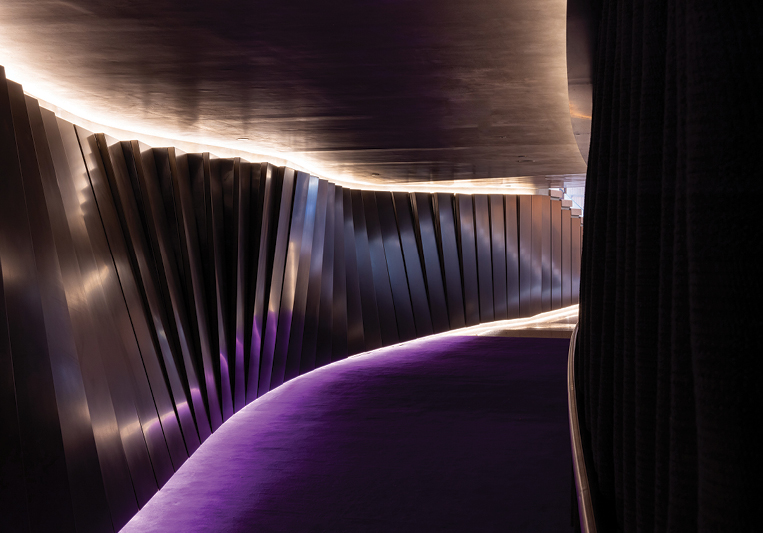
“Artists and audiences are set to experience world-class acoustics in a venue that is more accessible, safer and better equipped to present the full breadth of 21st-century performance,” said Sydney Opera CEO Louise Herron AM of the latest change.
The results are noticeable. This past December, I had the opportunity to see Kamasi Washington in the Concert Hall. The American sax player populates his compositions with layers of different sounds in a symphonic cacophony that feels both modern and traditional. The result deserves a venue where the sound feels distinguished and pulsating. Right away, I noticed that the iconic see-through acoustic reflector doughnuts had been replaced by 18 large magenta petals hanging over the stage.
The stage now has automated stage risers and can be adapted for different performances. At the same time, a new theatre flying system makes applying a greater range of lightning and scenery easier and safer, and opens the door to more ambitious performances and those on a broader scale.
“The Opera House is a gift, an immense source of pride to our community, and one of the busiest performing arts centres in the world. We’re throwing the doors open and inviting everyone to be part of a year-long festival celebrating the building, its history and all forms of contemporary culture.”
The changes to the Concert Hall are complemented by upgrades to other areas of the building. The Joan Sutherland Theatre, home to the Australian Ballet and Opera Australia, has been transformed by a series of technical enhancements that have prepared the venue for the new technological demands of the 21st century – a new rear stage scenery lift, an improved rigging system, upgrades to the orchestra pit, a new purpose-built rehearsal room, and more. The Centre of Creativity is a new hub open to everyone, with free and paid activities to inspire future creators.
“The Opera House is a gift, an immense source of pride to our community, and one of the busiest performing arts centres in the world,” Herron said. “Now, after 50 years of creativity and a decade of renewal, we’re throwing the doors open and inviting everyone to be part of a year-long festival celebrating the building, its history and all forms of contemporary culture.”
Renovations on the concert hall, including the installation of 18 innovative acoustic petals, the stage being lowered by 400mm to improve sight lines, steel reinforcements and adjustments to the acoustics for performers and the audience. Images Anna Kucera and Chris Bennett, supplied
Part of this commitment is laid out in painstaking detail in the Conservation Management Plan. This 160-page behemoth provides detailed guidance on conservation management principles that can be applied to all upgrades. It’s worth perusing just to feel the assuredness of the undertaking. The philosophy behind the project is two-pronged: to provide an acoustic worthy of the iconic status of the venue; and to enrich culture for the benefit of society. Not to realise the business potential of one of the most important music venues in this prime location, but to ensure that the Sydney Opera House can support our society and enhance our lives.
This is why the writings of Hall and Utzon were a quintessential part of the philosophy of this redesign. It’s why world class experts, heritage advisers, musicians and theatre consultants had a say in the project.
At the core of this philosophy is respect for the significance of the Sydney Opera House as a UNESCO World Heritage Site, for the original vision of its creators, and for the history of the place – from the time it was known as Tubowgule, a place of gathering and celebration for the Gadigal of the Eora Nation.
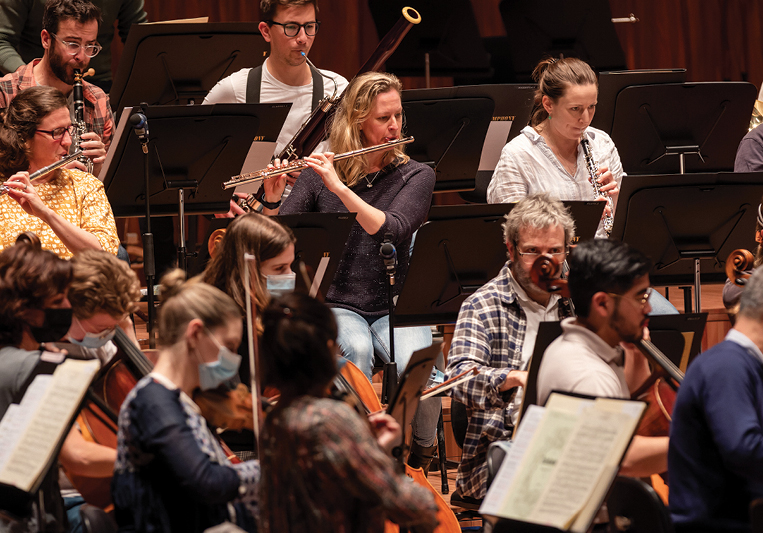
Better than we dared imagine
“Better than anything we could have hoped for. Better, actually, than anything we dared imagine. You can hear every minute detail now … right up to the back row. It’s a miracle,” said concertmaster Andrew Haveron when the first Sydney Symphony Orchestra rehearsal started last year after the redesign.
The Concert Hall reopened with a performance of a new work from proud Kalkadunga man William Barton, followed by Mahler’s Symphony No.2, Resurrection, conducted by leading Australian conductor Simone Young. Two thematically fitting performances to welcome the old/new Concert Hall under the scrutiny of critics and hardcore melophiles.
The reception couldn’t have been more positive; everywhere in the media, from The Sydney Morning Herald to Limelight, the concert was lauded as a thunderous restart after the hiatus of two and a half years caused by construction and the pandemic. “[The sound is] immaculately clear, subtly astringent with fine layering, keen edge and polished textural details,” said Peter McCallum in the Herald.
But the work will never be finished. “My father rationalised that a building like the Sydney Opera House would necessarily be a composite of the ideas of many different people in its lifetime,” said Jan Utzon.
At 50 years old, the Sydney Opera House has corrected its flaws, not to catch up with the times, but to secure its longevity. It has redefined itself for the future.
Fifty years from now, it will still be here, refreshingly new and reliably the same.
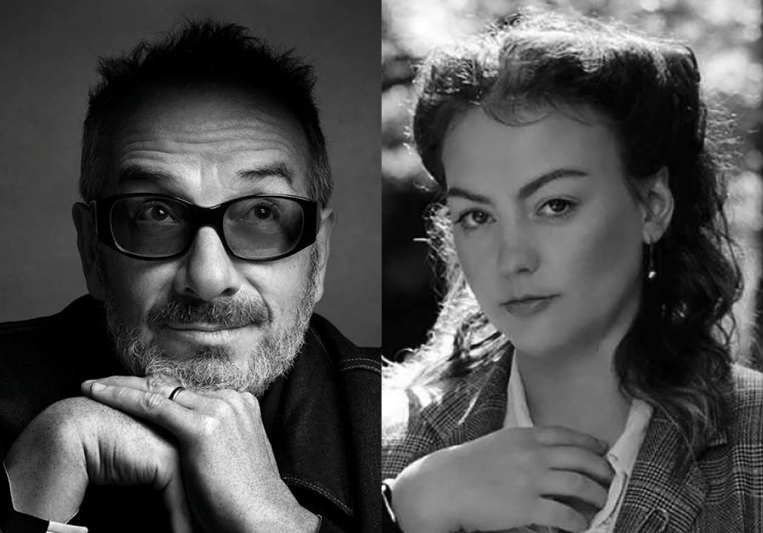
Coming soon
- Angel Olsen The American singer-songwriter (pictured above) returns to the Opera House after six years to perform her latest project, Big Time. Following her coming out as queer, Big Time replaces the epic and shredding indie rock affairs in her previous records with a more personal meditation about new love. Monday 6 March
- Roberto Devereux in Concert Renato Palumbo conducts Donizetti’s luxurious music in this tale of love, lust and betrayal in the Tudor royal court. Thursday 16 March – Saturday 18 March
- Rigoletto Opera Australia’s much-loved production returns with its glamorous La Dolce Vita-inspired sets, costumes, and a scene-stealing Fiat 500. Tuesday 13 June – Monday 26 June
- Pictures at an exhibition Music imitates art in Mussorgsky’s “Pictures at an Exhibition”, a dramatic suite of ten movements inspired by the artworks of Victor Hartmann. Unfolding with joyous energy and daring surprise, Mussorgsky’s musical scenes are as evocative and contrasting as the pictures themselves. Wednesday 8 March – Saturday 11 March
- Kronos Quartet Founded in the same year as the Opera House, Kronos Quartet returns to Sydney to celebrate its 50 years with a carefully curated selection of new music and classics, with works by Reich, Crumb and more. Tuesday 14 March
- The Princess Bride in concert The timeless classic by Rob Reiner, accompanied by Sydney Symphony Orchestra performing Mark Knopfler’s unforgettable score? Inconceivable! Friday 24 March – Saturday 25 March
- Kurt Vile & The Violators Returning to the Opera House for the first time in seven years, Philadelphia’s psych-folk rocker Kurt Vile brings his guitar wizardry to the Concert Hall for one night only with his band, The Violators. Friday 31 March
- Don Quixote In a creative feat that will see ballet transposed from screen to stage, Don Quixote recreates Rudolf Nureyev and Robert Helpmann’s 1973 film in a wildly colourful, palpably textured stage spectacle. Saturday 8 April – Tuesday 25 April
- Elvis Costello & The Imposters Multi-award-winning singer-songwriter and rock ’n’ roll hall of famer Elvis Costello (pictured above) returns to the Sydney Opera House Concert Hall – with his legendary band The Imposters – for the first time in 17 years. Sunday 9 April – Tuesday 11 April
- Donald Runnicles Conducts Brahms 2 Brahms’ Second Symphony is packed with sweeping emotions and lyrical tunes, expertly realised by Sydney Symphony’s Principal Guest Conductor, Donald Runnicles. Thursday 14 April – Sunday 16 April
- Saltbush An immersive and interactive journey through Australia’s First Nations culture. Saltbush centres on the journey of two friends and their spiritual guide on foot as they cross Australian landscapes – a river country, an urban landscape, a desert, and the sea. Using sensor and infrared cameras, Saltbush allows young audiences to interact, play and perform in the show. Friday 14 April – Monday 17 April
- Identity Two of Australia’s leading choreographers, Daniel Riley and Alice Topp, join forces to explore the theme of Identity. Tuesday 2 May – Saturday 20 May

